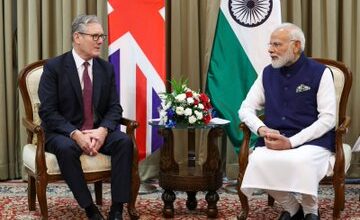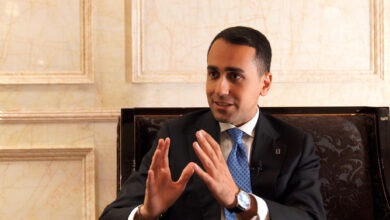Smoking prevalence in Kuwait down, but not out

On World No Tobacco Day, which falls annually on 31 May, a look at the smoking prevalence in Kuwait reveals that while the trend is downward, having become passé among many adults, an increasing number of young people are getting addicted to smoking. In particular,new smoking products, such as flavored e-cigarettes, thrust on them by tobacco companies under the guise of being harmless products, are gaining favor with youth.
In early May, the Ministry of Health, in cooperation with other state agencies, launched an awareness campaign on a national anti-smoking program aimed at protecting children from smoking. In a statement issued on the occasion, the ministry noted that the use of tobacco, both regular cigarettes and the newer vape or electronic cigarettes (e-cigarettes), among children was alarmingly on the rise. Surveys show that the use of e-cigarettes among children in the 13-15 age group was threefold higher than among adults.
Despite significant progress in reducing tobacco use among adults, the emergence of e-cigarettes and other new tobacco and nicotine products present a grave threat to youth, and to tobacco control initiatives, warned the World Health Organization (WHO) in a recent report. With half of all tobacco users dying prematurely, ensuring a lifetime of profits for the tobacco industry relies heavily on recruiting new, young users, and hence its focus on young children.
“History is repeating itself, as the tobacco industry tries to sell the same nicotine to our children in different packaging,” warned WHO Director-General Dr. Tedros Ghebreyesus. Tobacco companies employ multiple tactics to gain the trust and interest of young people at an early age. Through extensive advertising campaigns on popular social media and digital streaming platforms that are mostly unregulated, tobacco companies evade advertising regulations and unscrupulously target young people.
In 1988, the WHO decided to observe World No Tobacco Day (WNTD) each year on 31 May, to focus global attention on the continued widespread prevalence of tobacco use, and its deleterious health impacts on people. The day highlights endeavors by WHO to combat tobacco usage worldwide, as well as draw attention to the tobacco industry’s insidious practices aimed at negating attempts to curtail smoking.
Latest health figures from WHO show that smoking kills more than eight million people each year, including an estimated 1.3 million non-smokers who are exposed to second-hand smoke. In 2020, approximately 22 percent of the global population used tobacco (36.7% of men and 7.8% of women).
To address the tobacco epidemic and implement policies that work towards tobacco cessation, in 2003, the World Health Assembly adopted the Framework Convention on Tobacco Control (FCTC). Although 90 percent of the world’s population is now covered by the FCTC, it is estimated that less than half (49%) of the countries will meet the target of reducing tobacco use by 30 percent by 2025.
Kuwait ratified the WHO treaty in 2019, however, long before ratifying the WHO Protocol, the Ministry of Health (MoH) in Kuwait was pioneering tobacco cessation services as part of its tobacco control policies. It is noteworthy that the first tobacco cessation clinic in the region opened in Kuwait in the early 1980s. By 2003, there were cessation clinics in every governorate, providing medical assessment, nicotine replacement therapy and counseling.
The forward-thinking outlook by MoH has helped shape the state’s tobacco control strategies that have resulted in a significant drop in smoking among the public. A health survey conducted by MoH, in cooperation with the WHO in 2014 showed that the average prevalence of smoking in Kuwait was 21.3 percent in the 18–69 age group — a significant drop from the 34 percent recorded in 1995 and the 27.2 percent observed in 2006.
Nevertheless, given the country’s relatively small population, the prevalence rate is considered high, and is an indicator of potential increase in heart disease and chronic non-communicable diseases in the future. Additionally, building on the 21.3 percent prevalence rate, the WHO predicts deaths attributable to smoking could be more than 345,000, or nearly half of the 670 000 smokers alive today.
The global health body warned that unless stronger policies, including large tax increases on tobacco products, stringent marketing restrictions, strong health warnings, stricter laws on smoking, a comprehensive cessation program, and an effective mass media campaigns are implemented the death toll from smoking could continue to rise each year.
In 1995, Kuwait introduced its Anti-Smoking Law 15/1995. Among others, the law prohibits the cultivation and importation of tobacco seed and seedlings, and the manufacture of all forms of cigarettes. The sale or presentation of cigarettes and other tobacco derivatives to people below the age of 21 is prohibited. Smoking is forbidden in enclosed and semi-enclosed public places and in public means of transportation. Advertising of cigarettes and all types of tobacco products and its necessities is also banned.
However, rigorous implementation of many of these laws has been lacking, especially with regard to new tobacco products such as e-cigarettes. Kuwait does not prohibit import or sale of e-cigarettes. Although in 2011, the General Administration of Customs had issued a ban on import of all e-cigarette products, the ban was withdrawn in 2016, allowing companies to import ‘e-shishas and flavored products’.
In 2022, the government also decided to delay the imposition of an earlier planned 100 percent tariff on e-cigarettes and their flavors. The WHO stresses that governments seeking to reduce tobacco use and nicotine addiction should either ban e-cigarettes, also known as Electronic Nicotine Delivery Systems (ENDS) entirely or regulate them strictly as medicinal products or use the WHO’s FCTC measures.
Tobacco companies invest enormous amounts of money in lobbying against tobacco control policies. and fundsorganizations that promote its interests. It uses different ways to spread misinformation, including through front groups and third parties, social media influencers, sponsored events, funding scientists and biased research. Despite tobacco killing over eight million people each year, the industry blatantly continues producing trillions of cigarettes that earn them billions of dollars in profit each year.
Meanwhile, a report by the WHO and the National Cancer Institute in the United States estimated the global economic burden of tobacco usage from healthcare costs and lost productivity at USD1.8 trillion annually, or around 1.8 percent of global GDP. Almost 40 percent of this cost occurs in low- and middle-income countries, (LMICs) where nearly 80 percent of the world’s 1.3 billion tobacco smokers live with limited access to tobacco cessation and treatment facilities.
Over the years, in response to irrefutable scientific evidence linking tobacco smoking to lung cancer and other illnesses, as well as growing public and political pressure to control tobacco usage, as well as multiple lawsuits filed against them, the tobacco industry began introducing new products camouflaged as being safer choices. Filtered and low-tar versions of cigarettes promised a ‘healthier smoke’; vaping or e-cigarettes were claimed to be a ‘safer alternative’; and the latest avatar of tobacco, nicotine pouches, is being touted as helping ‘reduce harm’.
The tobacco industry’s deceiving tactics highlight the urgent need for strong regulations to protect people, especially the young from a lifetime of harmful dependence. Youth organizations from around the world that participated in the Tenth Conference of the Parties to the WHO Framework Convention on Tobacco Control (COP10) in February, delivered a powerful message to policy makers — “Future generations will remember you as the ones who protected them, or the ones who failed them and put their lives in danger.”













